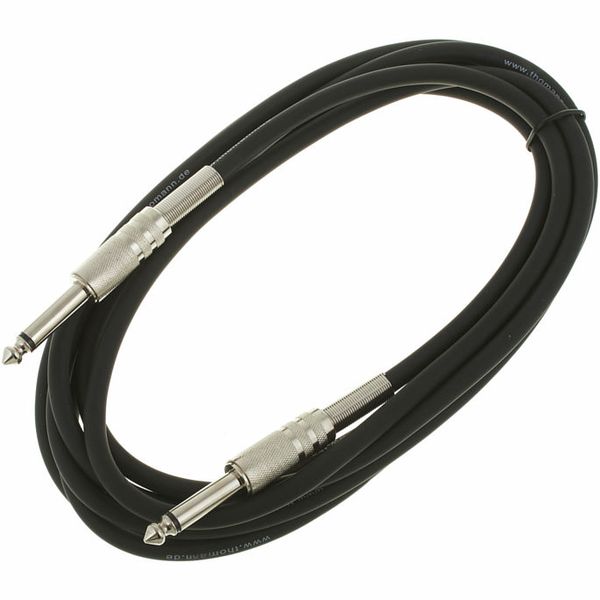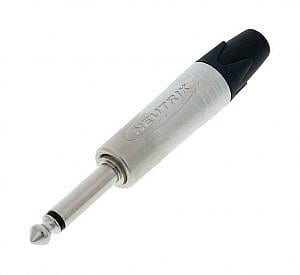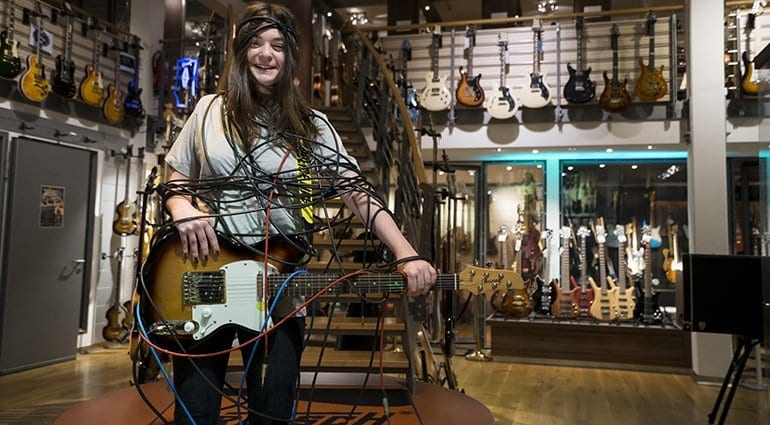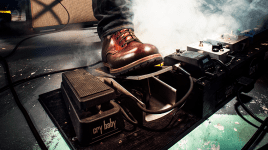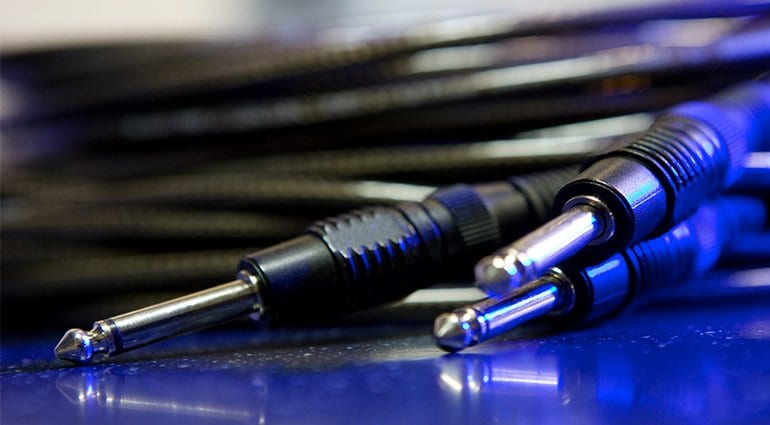
If you click on the “Cables” section in the Thomann online shop, 16 different categories are displayed for different audio cable types. In the first category “Instrument cables” alone, 419 different products are listed! Okay, there are a lot of the same cables in different lengths and / or colours, but asking which cable is the “right” one is something that any instrumentalist might do. You always hear “Cables are important!” and we agree, so here’s our brief exploration of the jungle of (audio) cables!
Through the jungle of audio cables
During a concert, what I play on my acoustic guitar is what I get from the PA speakers so why do you need so many different cable types? A simplified answer: Because the cables transmit identical content (ie the guitar signal), the signal is continually changed in its “consistency” for technical reasons.
For example, a microphone delivers a signal at its output, which is more a “signal”, it is from a few millivolts to 1 volt strong. A power amplifier sends the same signal but with tens of volts to the loudspeaker. For the transmission of these different strengths of signals it needs different cables – or in other words: the cable and the requirements of the application must match!
This is the reason why a guitar cable should not be used as a loudspeaker cable: Signal strength and cable do not fit together!
The Anatomy of Audio Cables and Instrument Cables: Understanding Their Construction
The instrument cable (or guitar cable / patch cable / patch cord) is a cable with two identical jack plugs at each end. The plugs have a standard diameter of 6,35 mm (this seems like a random number but it’s actually the conversion of ¼ inch).
For signal transmission, the cable has an inner conductor and for protection of the signal, against interference, a shield, which surrounds it. Internal conductors and shielding are separated by an insulation layer. The inner conductor consists of many fine twisted copper strands. The signal is transmitted using an “unbalanced” instrument cable.
This means that the shield is used as a “return path” for the signal to close the circuit.
The jack plugs (or sockets) have two contacts: one for the signal conductor and one for the shielding. Because only one signal is transmitted, these plugs are sometimes called mono-jack plugs. However, there are also jack plugs with three contacts, which are called stereo jack plugs, but can still transmit mono signals (with a symmetrical transmission). Therefore, the English designation of the jack plug is somewhat more universal because there is no confusing information about the signal to be transmitted in the name. The plug is only named after its contacts: Our mono plug is called TS plug, because it has the “tip” contact and the “sleeve” contact (tip = plug tip, sleeve = shaft). The stereo plug is called the TRS plug, with the additional “R” for “ring” and a second contact for an additional inner conductor.
The Role of Premium Jack Plugs in Audio Cable Performance
Two things are important here: the housing material and the strain relief. These are the things that make a difference, especially when touring! The housing should be made of metal. Moulded plastic plugs are OK when it comes to the load capacity, modern plastic materials are very stable. The problem is in the event of a defect on the plug, all you can do is throw it in the garbage. A metal plug can be unscrewed and soldered again and again. The strain relief of the plug is very important.
There are two variants: A clamp with metal tongues pressed around the cable. And the variant with clamping forceps, which are pushed onto the cable by turning the plug. The latter is the strain relief of our choice, it holds the cable permanently secured in the plug, even in the angled version. Here is Thomann’s selection of jack plugs.
Neutrik is kind of a market leader in connectors. With Neutrik connectors you can never go wrong, these are tried, tested and true plugs. A good alternative are the Hicon connectors, which are marketed by Sommercable. Gold gilding on the plug is not a sound criterion. Gilded plugs do not oxidize, and this is the only advantage of expensive precious metals.
Onstage Reliability: Instrument Cable Essentials for Musicians
Regarding the sound I dare to say that any cable that is made with brand-name connectors is good enough for live operation (more on the subject of cables and sound later…) If you want to be well equipped for the stage you need one thing: robust cables made from high-grade materials which are reliable in any amount of movement and use. Let’s find out more about audio cables, and specifically about stage cables for when you are playing!
Stage cables must remain… silent!
Cables on stage are stepped on, kicked, bent out of shape and inevitably showered with beer (or worse). A stage cable has to withstand all of this abuse without complaining, it must remain silent, no crackling, no buzzing and no humming. Some cheap microphone cables, when moved even a millimetre can cause a crackling or popping sound. This movement is made audible by the subsequent amplification. At a rock show it is virtually impossible to keep the mic cable completely still so manufacturers invented a second shield inside the cable, which absorbs these tensions.
Stage cables must be well shielded!
Not only cheap microphone cables mess up the signal, instrument cables are worse because they act like antennas, and bad cables are damned good antennas. The shielding inside the cable helps to reduce this interference. The simplest shield is the spiral shield, copper wires are wrapped around the cable in a band.
The only problem is that the shield can be bent by constant movement and pulling so that the inner conductor is no longer completely covered. This results in streaks opening up.
The better option is the cross-braided shield, also made of copper, which guarantees the complete cover of the inner conductor, even when the cable is bent forcefully. However, since quite a lot of copper is used in the braided version these cables are more expensive.
Stage cables must be flexible!
Nothing is more annoying than rigid cable spirals, which wind around you like a boa constrictor. Stage cables must be flexible in handling and have as little resistance as possible. Unfortunately, we are stuck in a pinch: all of the above-mentioned measures to keep the cable noise free – the cross braided copper, the additional shield against the microphone, thick cable jacket – make the cable thicker and stiffer and thus less flexible. Ultimately, we have to deal with a compromise of good handling and good shielding.
Audio Cable Length and Its Effect on Treble Response
You have probably heard of the loss of treble in guitars by too long an instrument cable. This is due to the high output impedance of passive pickups in combination with the cable capacitance, which together form a low-pass filter. How this happens exactly would be a topic for your own blog contribution, what’s important is: the longer the cable the more capacitance, which will increasingly filter out the higher frequencies in the signal from your guitar. From what length this effect becomes audible depends on several factors. Ten meters is a rough estimate. Also the instrument itself and the amplifier play a role here.
Some guitarists need long cables to be able to interact with the audience and often they are not concerned about their high frequencies shining as brightly as possible. So the best cable, technically speaking, is not always the appropriate one, it really depends on the situation.
Keyboardists, on the other hand, do not have to worry about their highs. Their low-impedance outputs will not cause an audible loss of high frequencies for cables longer than ten meters. The same applies to string instruments with active electronics. The output is also so low-impedance that the loss of highs would only occur with incredibly long cables.
Investing in Audio Cables: Is Higher Price Always Better Sound?
There is an instrument cable that costs 6,598.90 US dollars for three meters of cable (the Micro Golden Oval by Analysis Plus). How can an instrument cable cost more than $ 6,000? Simply because there are people who would pay for it.
From a physical point of view, you do not need any special efforts or expensive materials to cleanly transmit the audio signal with a bandwidth of up to 20 Hz to 20 kHz, and knowing this you can realize the nonsense of such products.
If you want some entertainment this evening, open a bag of chips and a coke and google “sound” and “cable”. There are debates between the pragmatists, who deny any influence of the cable on sound and provide physical explanations for it, and the audiophiles who swear that they hear more “transparency, space and pressure” at $6,000.
You do not have to spend $6,000 on an instrument cable. Instead of the high-end cable I would recommend getting a few good instrument or audio cables in different lengths. The common lengths are three, six, nine or ten meters. There are many good guitar cables (such as the Fender Custom Shop Angle Cable), which are available in different lengths so that you are prepared for all stage sizes.
- Sommer Cable The Spirit XXL Ins. 6.0 AS
- Fender Custom Shop Angle Cable TW5, 5m
Conclusion on audio cables
As in many areas of music, there is still progress being made in the field of cable development and production, which will benefit us in the form of more favourable prices. If you go for the middle price range of say 20 to 50 euros for a branded audio cable (depending on the length of the cable), you can’t go wrong. Such cables are reliable, consist of tried and tested materials (not short on copper), the cables are neatly made, and use brand-name plugs. If you treat such cables with care, they won’t fail you!
If you are lost on finding the right cable for you, this is the place where you can search for suitable cables for your equipment quickly and conveniently. You can select by plug, socket, colour, material, length, price range, and manufacturer.
👇
CableGuy
Check out the cables and plugs on thomann.de
Do you have any question or doubts about audio cables and connectors? We are looking forward to your feedback 😉
You are currently viewing a placeholder content from Facebook. To access the actual content, click the button below. Please note that doing so will share data with third-party providers.
More InformationYou are currently viewing a placeholder content from Instagram. To access the actual content, click the button below. Please note that doing so will share data with third-party providers.
More InformationYou are currently viewing a placeholder content from X. To access the actual content, click the button below. Please note that doing so will share data with third-party providers.
More Information